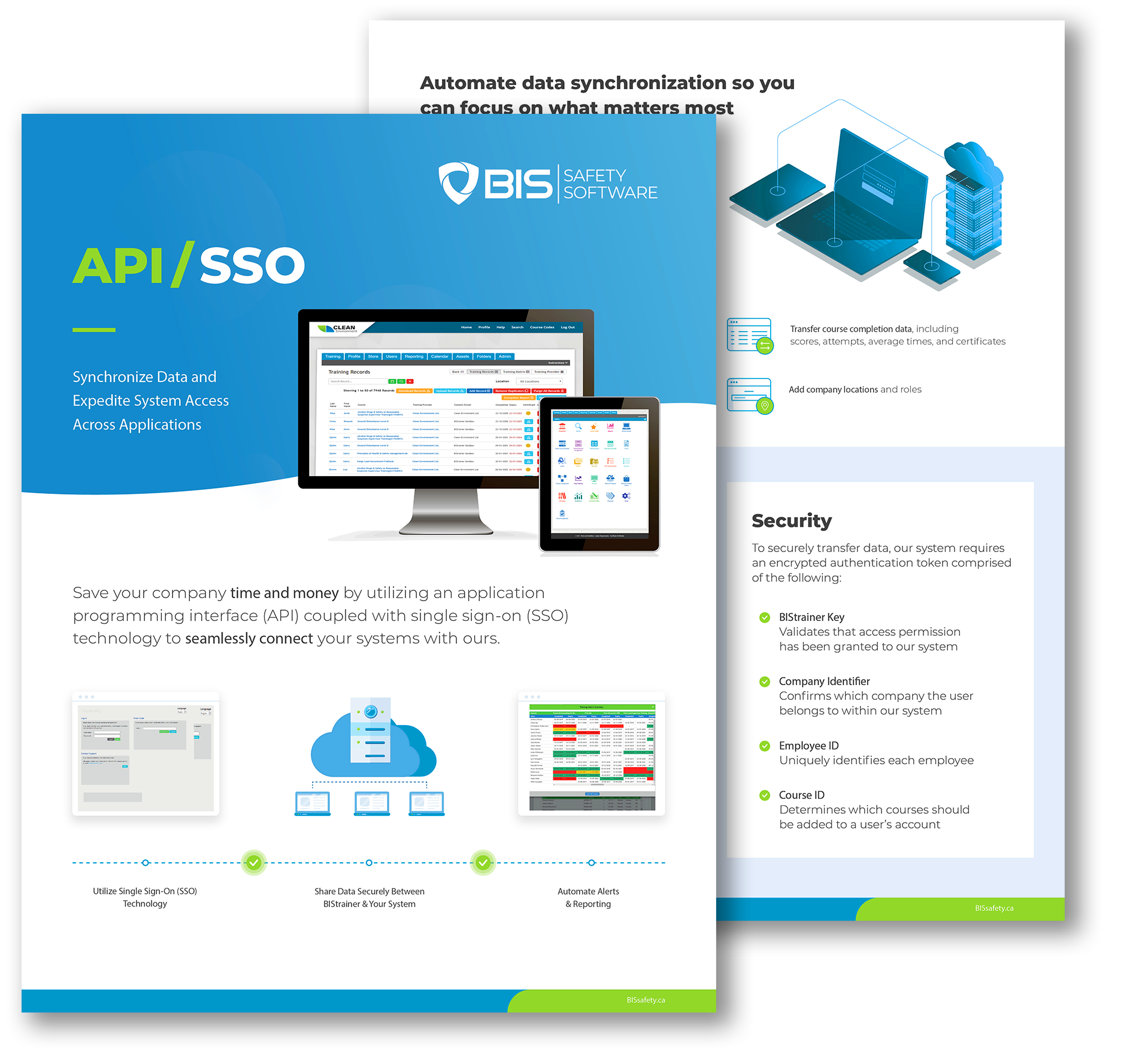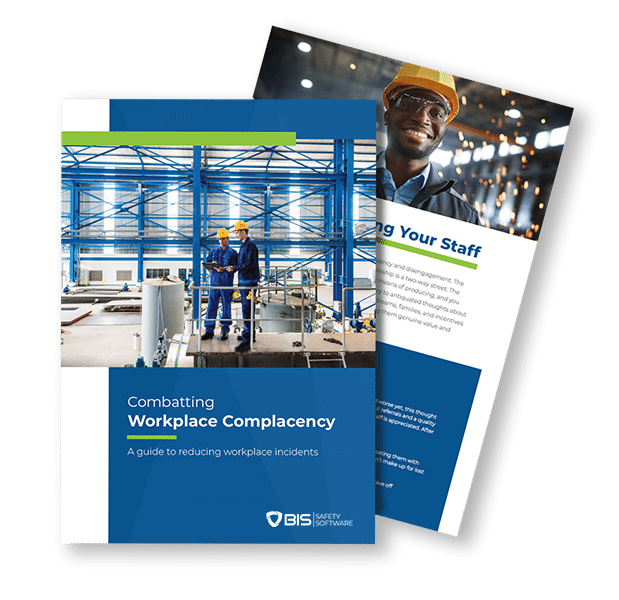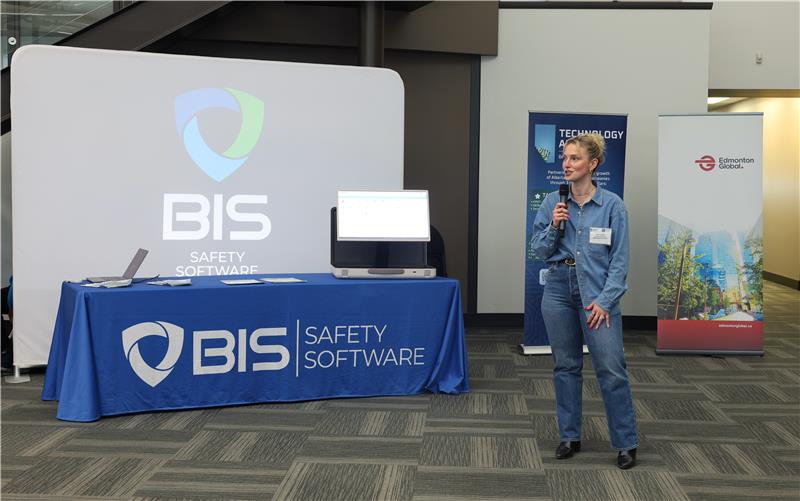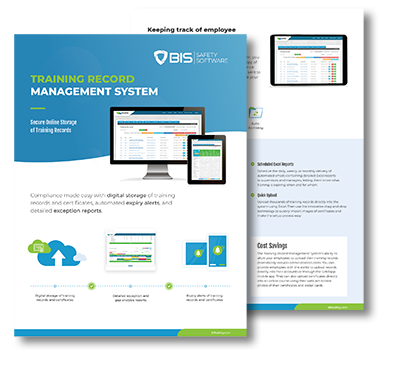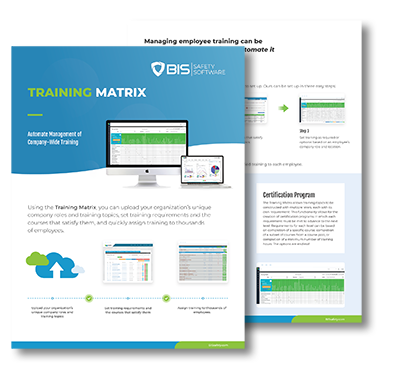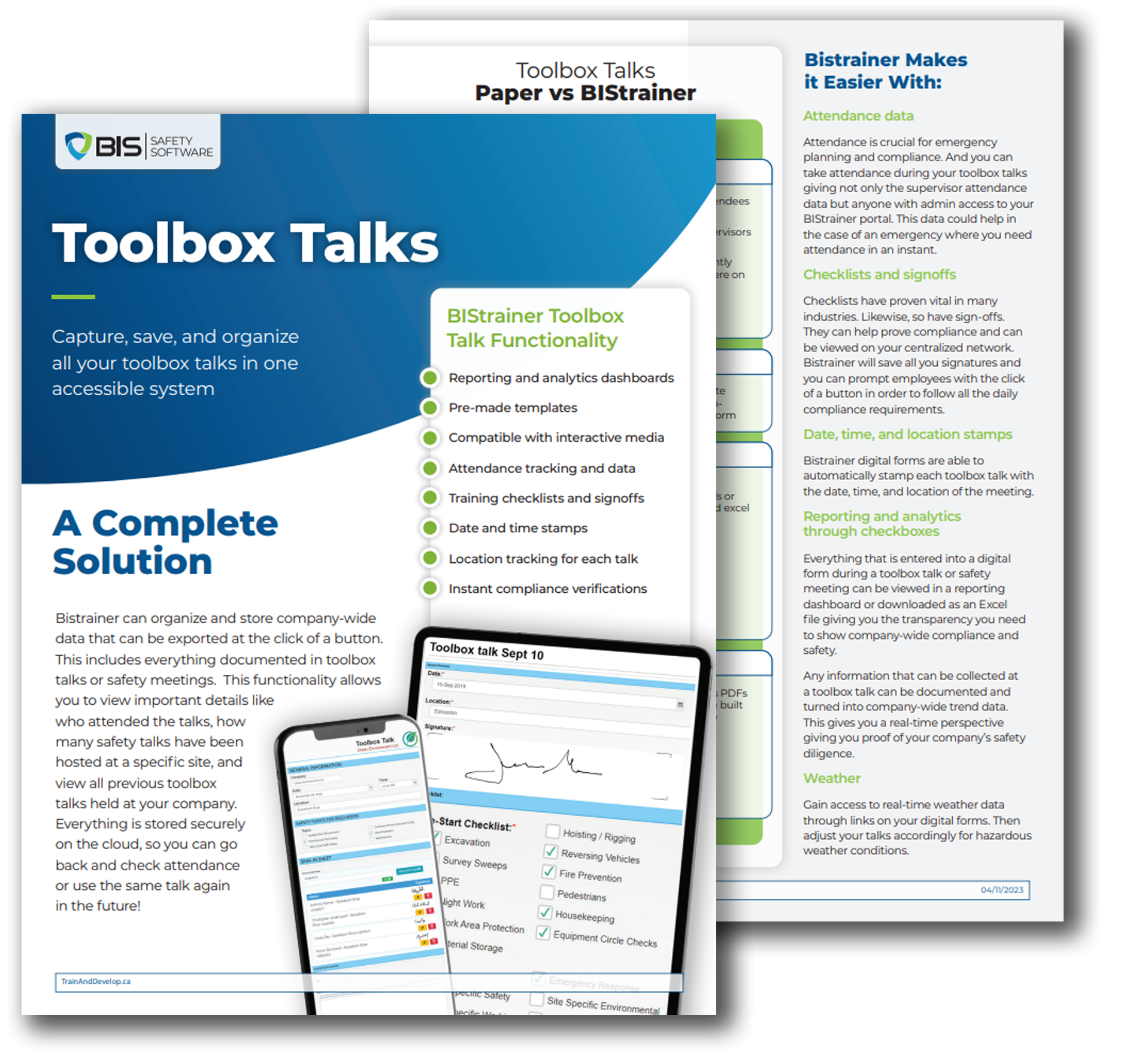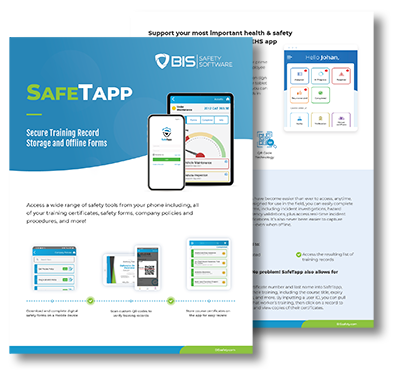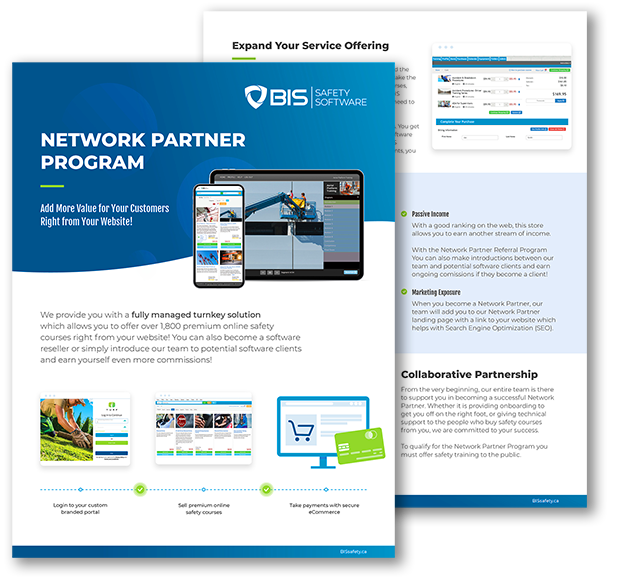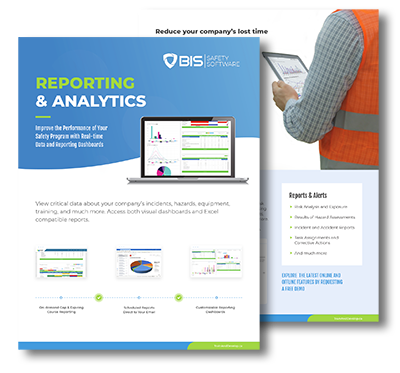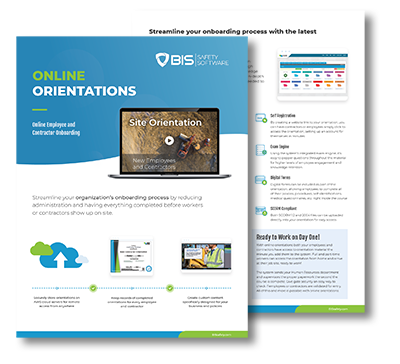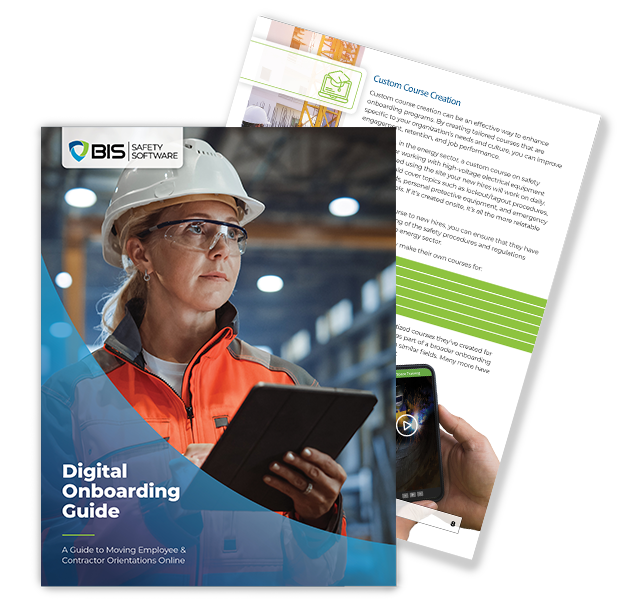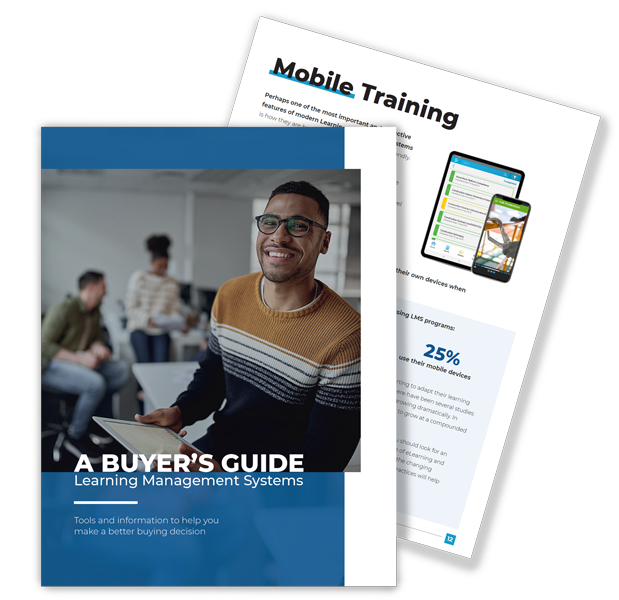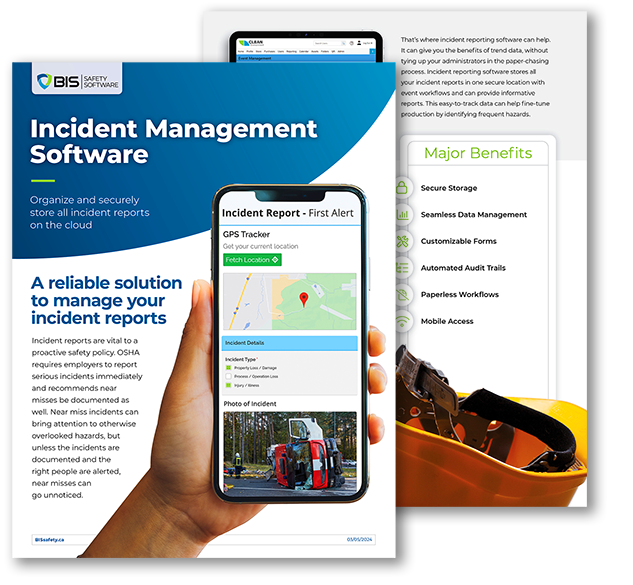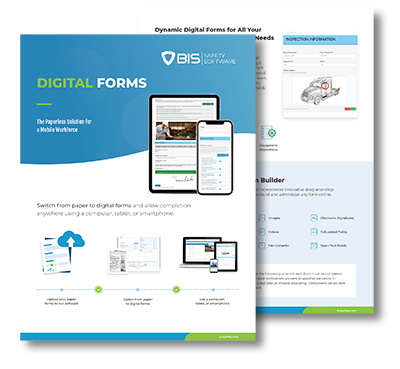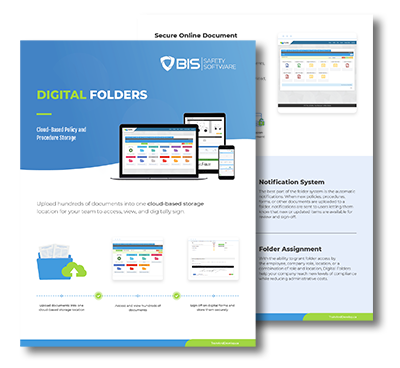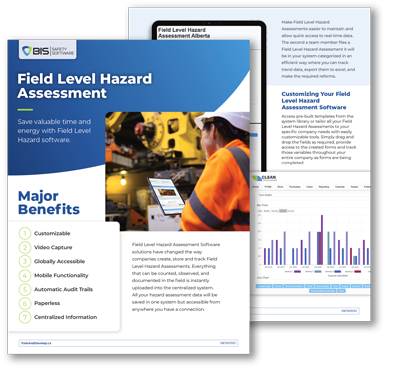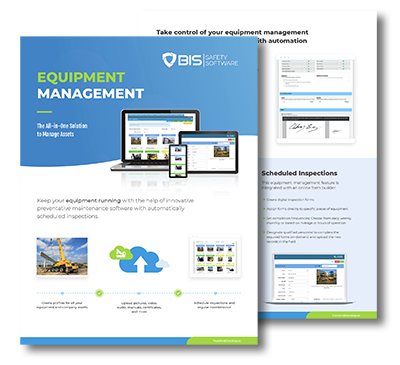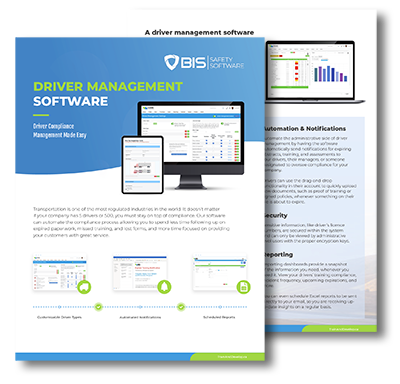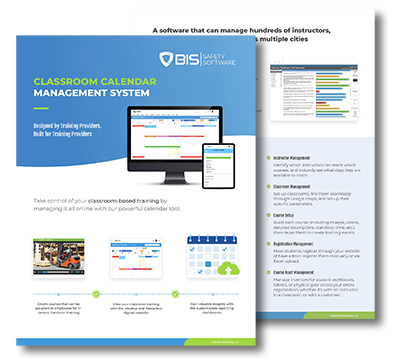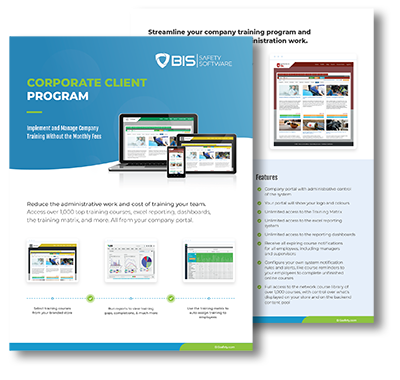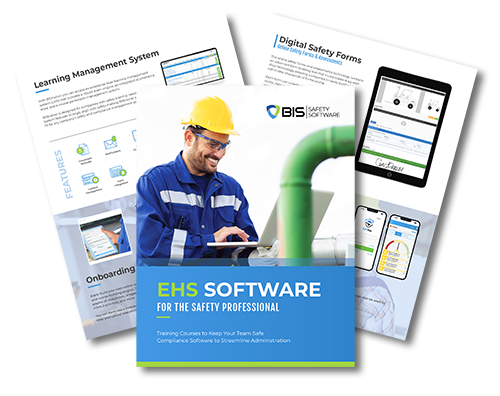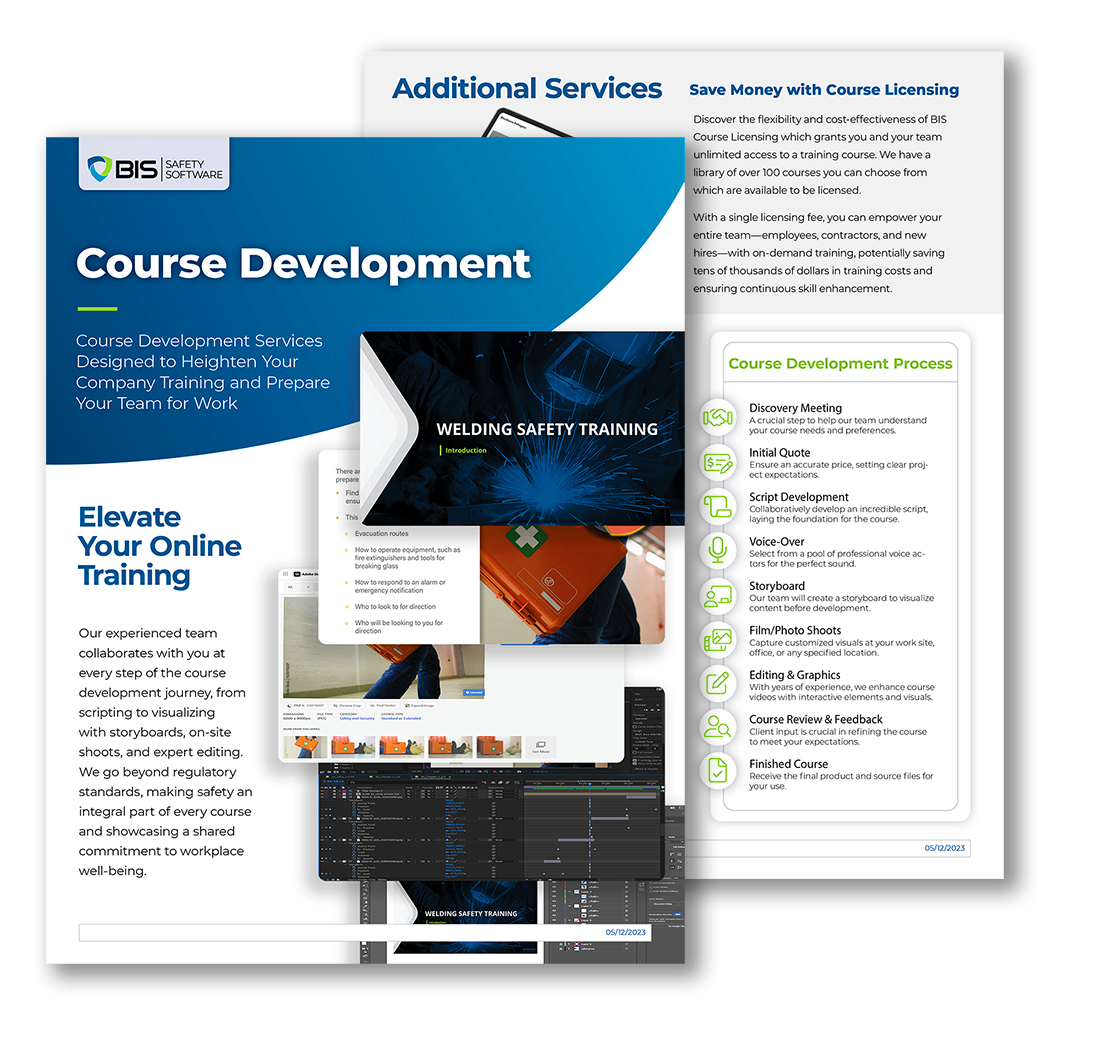The 5 Most Overlooked Workplace Hazards
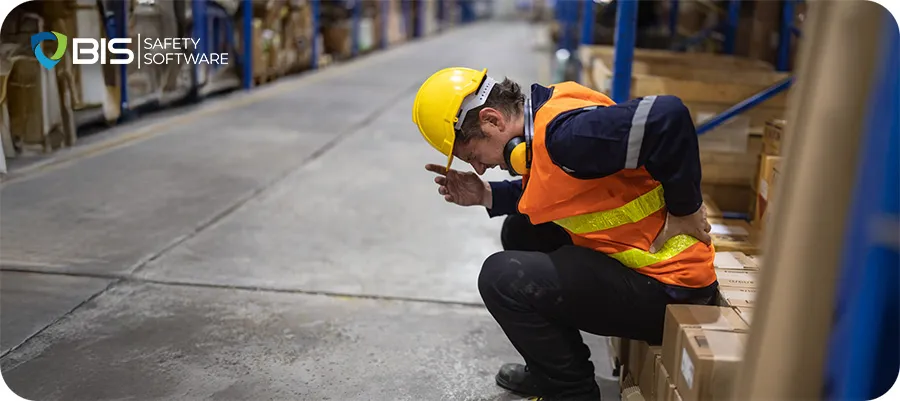
Home Blog The 5 Most Overlooked Workplace Hazards And How to Fix Them By Luke Hillenbrand Facebook Twitter LinkedIn Workplace safety isn’t just about hard hats and high-visibility vests. Some dangers hide in plain sight. You don’t see them until someone gets hurt. Many risks grow over time, unnoticed. A small ache turns into a disability. A moment’s distraction causes catastrophe. Here are five hazards that often slip by and how to stop them. 1. Poor Ergonomics Sitting all day seems harmless. It’s not. Bad posture and repetitive movements wreck joints and muscles. Office workers, warehouse staff, and factory crews all suffer. Over time, pain turns into lasting damage. Injuries creep in—strained wrists, stiff necks, aching backs. Productivity drops. Workers call in sick. Minor discomfort today becomes a major problem tomorrow. Fix: Adjust chairs, desks, and screens. Teach proper lifting. Offer ergonomic assessments. Small tweaks—like raising a monitor or using anti-fatigue mats—make a big difference. Encourage movement. Stretching and short breaks prevent strain. Rotate tasks to reduce repetitive stress. 2. Mental Health Strain Stress doesn’t leave bruises, but it cripples workers. Burnout and anxiety make mistakes more likely. A distracted worker is a dangerous one. Fatigue slows reflexes. Irritation sparks conflict. Low morale leads to high turnover, more sick days, and poor focus. A stressed worker is an accident waiting to happen. Fix: Foster an open culture. Let employees talk about mental health without fear. Offer support programs. Push for realistic workloads. Breaks aren’t a luxury—they’re a necessity. Flexibility and mentorship help keep teams strong. Train supervisors to spot warning signs. A quick check-in can prevent a breakdown. 3. Invisible Toxins Danger isn’t always visible. Dust, mold, and chemical fumes lurk in the air. They creep into lungs, causing long-term harm. Poor ventilation makes things worse. Workers may not realize they’re exposed until it’s too late. Headaches, dizziness, breathing problems—subtle at first, serious over time. Chronic illness follows. Fix: Test air quality often. Use respirators when needed. Maintain ventilation systems. Train workers to spot symptoms early. Better filters and safer handling reduce risks. Label chemicals clearly. Store them safely. Ensure spills get cleaned up fast. 4. Complacency Familiarity dulls caution. When tasks feel routine, workers cut corners. Safety rules become afterthoughts. One skipped step can lead to disaster. The most experienced workers can be the most at risk—they trust themselves too much. Overconfidence kills. Fix: Keep safety fresh. Hold surprise inspections. Reinforce training often. Encourage workers to call out unsafe behavior. Reward attention to detail. Keep everyone engaged and alert. Rotate duties so routines don’t become ruts. Make safety meetings interactive—not just another checkbox. 5. Improper PPE Use Safety gear only works when used right. Loose masks, missing gloves, or fogged-up goggles won’t protect anyone. Some workers resist PPE—it’s uncomfortable, inconvenient, or forgotten. Others assume they don’t need it. A single lapse is enough for injury. Fix: Train workers to use gear in the correct way. Do regular compliance checks. Make sure PPE fits well and is easy to access. Keep training short, direct, and frequent. Show real-life examples of what happens when someone ignores PPE. Make safety personal. Stay Ahead of the Risks Hidden hazards are still hazards. Spot them early. Fix them fast. A safe workplace doesn’t just happen—it takes constant effort. Safety isn’t a one-time meeting. It’s a daily commitment. Keep safety a priority. Stay sharp. Stay safe. A moment of caution saves a lifetime of regret. BIS Social Media Follow BIS Safety Software for industry-leading safety updates, training solutions, and more. Hover over each icon for quick access to follow, share, or explore our other channels. Facebook Instagram Linkedin Youtube Related Articles All Posts 360 Immersive Alberta safety courses Allan James Moore awareness BambooHR integration biometric sensors BIS Podcast BIS Safety Software black holes Brave Leadership chemical chronic injuries Coming Soon community safety programs Compliance compliance courses compliance tools compliance vs protection Construction advocacy Construction education Construction industry construction safety training crane customized training daily trip inspection Danny Sellers data-driven safety digital forms Dr. Joanna Pagonis driver file management driver training early intervention EHS Einstein emergency preparedness emergency supplies employee health employee safety employee training ergonomics exoskeletons fall protection field safety field safety services fire prevention first aid kit first week on the job fleet management frontline safety gravitational waves hands-on training hazard communication hazard prevention Health & Safety Podcast heavy equipment safety high voltage systems HR automation HR software humor in safety Imposter Syndrome incident data incident reporting industrial safety injury prevention injury reporting injury response internal audits Jennifer Lastra job site hazards job site risks job site safety Jody Young KBR Safety Training Leadership leadership accountability leadership and empathy LIGO LMS lone workers mental health at work MI Safety new workers Northern BC NRCA NSC Standard 13 occupational health occupational safety oil and gas safety onboarding safety Online safety training OSHA compliance OSHA standards overhead crane courses pain awareness physics careers pipeline safety podcast PPE PPE enforcement pre-trip inspection pretrip inspection Professional development psychological safety risk management road safety Robin Postnikoff safety safety advice safety article safety best practices safety communication safety compliance Safety Conversations safety culture safety innovation safety insights safety inspection Safety Leaders safety leadership safety management safety management system safety metrics safety myths safety podcast Safety Spotlight safety systems safety technology safety theater safety tips safety training Sinogap Solutions smart helmets space science supervisor training Total Recordable Injury Formula training training courses training matrix training record management transportation Trust and Accountability vehicle safety Virtual Reality VR Technology wearable technology WHMIS women in leadership work-alone training worker accountability worker protection worker safety workforce management workforce training workplace best practices workplace certification Workplace Culture workplace hazards workplace health workplace injury prevention workplace risk management Workplace safety workplace safety culture workplace wellness WSPS Party Crashing the Safety Status Quo: Allan James Moore on Redefining Safety Leadership April 22, 2025 In this Safety Spotlight episode, Allan James Moore dives into the “Party Crasher” mindset, challenging traditional safety norms with humor,… Read More Jeff Mulligan
Revolutions in Safety

Home Blog Revolutions in Safety How Dr. Johanna Pagonis is “Womaning Up” She’s not just leading—she’s redefining leadership. Dr. Johanna Pagonis is putting people at the heart of safety By Luke Hillenbrand Facebook Twitter LinkedIn Dr. Pagonis Puts People and Psychology at the Center. ————————————————————————— “You can have the best systems and equipment. But, if people aren’t empowered to speak up, you’ll always fall short.” Dr. Johanna Pagonis ————————————————————————— That’s the philosophy guiding Dr. Johanna Pagonis, founder of Sinogap Solutions. Dr. Pagonis, an expert in leadership and psychological safety, has redefined how organizations view safety. Her approach is simple but profound; safety starts with people. Their voices, their courage, and their ability to lead from the heart. Falling Into Safety: A Career Reimagined When Dr. Pagonis launched Sinogap Solutions, her focus wasn’t on safety. But a conversation with a former colleague, Christopher Spasoff, changed her perspective. “Christopher is an occupational health and safety lawyer. He told me, ‘What you’re teaching—emotional intelligence, leading with the heart—this is what the safety industry needs,’” Dr. Pagonis recalls. That idea stuck with her. Dr. Pagonis’ early work focused on mental and psychological health, not physical safety. “I can’t tell you how to design an organization for physical safety,” she admits. “But I can tell you how to empower people to use the tools and systems you’ve already put in place.” For Dr. Pagonis, this is the core of the problem. “Checklists and high-tech gear won’t help. If people don’t feel safe challenging the status quo or proposing new ideas, you won’t achieve your safety goals,” she says. Her mission was clear: teach groups to create safe, innovative, and collaborative environments. Her leap into safety wasn’t just about identifying gaps; it was about bridging them. As she consulted with organizations, she found that psychological safety wasn’t a fringe concept. It was a foundation. “It’s not something you tack on,” she says. “It’s woven into every conversation, every decision.” Psychological Safety as the Foundation Dr. Pagonis’ work centers on psychological safety. The idea that people should feel safe to take risks without fear of punishment is a spearhead. “Organizations often focus on the tangible aspects of safety,” Dr. Pagonis explains. “But psychological safety is just as important. Without it, even the best tools and processes will fail.” Dr. Pagonis trains leaders, through Sinogap Solutions, to create safe spaces. Employees should be able to voice concerns and suggest solutions without fearing retaliation. She emphasizes that this isn’t about creating a “bubble-wrapped” workplace. ————————————————————————— “Psychological safety isn’t about avoiding hard conversations. It’s about having the courage to speak up and challenge the system when it’s needed.” Dr. Johanna Pagonis ————————————————————————— Her training programs teach leaders to be vulnerable, build trust, and listen with empathy. “If leaders don’t set the tone, no one else will,” Dr. Pagonis says. “Brené Brown says it best: what a leader does gives permission for others to do the same.” One of her favorite teaching tools is role-playing difficult conversations. “People often freeze when they’re in the moment,” she explains. “Practicing scenarios teaches them to face challenges without shutting down or escalating.” Dr. Pagonis also emphasizes the importance of consistency. “You can’t build trust with one grand gesture,” she says. “It’s the small, daily actions that matter most.” Key Takeaways Psychological safety is the foundation of real safety. Without trust and open communication, even the best systems fall short. Empowered people make safer decisions. When employees feel heard and valued, they’re more likely to speak up and take initiative. Leadership starts with vulnerability. The tone leaders set—through empathy, consistency, and courage—shapes the entire safety culture. Investing in people isn’t soft—it’s strategic. Programs that build confidence and trust drive long-term results in safety, engagement, and performance. Breaking Barriers in Male-Dominated Industries Dr. Pagonis’ work often intersects with male-dominated fields like law enforcement, construction, and transportation. Her course, “Women Up: Ignite the Leader in You,” addresses the unique challenges women face in these environments. “When I started my career, I spent years in male-dominated spaces,” Dr. Pagonis shares. “As a female civilian in law enforcement, I had to earn credibility in ways my male counterparts didn’t.” Those experiences inspired her to create programs that equip women with the skills and confidence to lead. The Women Up course is on its seventh cohort. The program focuses on building confidence, fostering executive presence, and navigating difficult conversations. “One of the biggest challenges women face is confidence,” Dr. Pagonis says. “Whether it’s speaking up in meetings or advocating for themselves, the gap often isn’t in skills but in belief.” One success story stands out. A participant in the inaugural cohort was a senior executive. She was acting in a temporary role while competing for a permanent promotion. The decision-makers passed her over, claiming she was “stressed” and needed “protection.” Dr. Pagonis calls this a classic case of benevolent sexism. “Her male peers were never told they weren’t promoted because someone needed to protect them,” she notes. They denied her opportunities despite her clear qualifications. The program taught the executive to frame her concerns. It also helped her control her emotions in high-stakes talks. “She went back to her boss, asked him to advocate for her, and changed the narrative,” Dr. Pagonis recalls. “Within a month, they promoted her.” The ripple effects of Women Up are far-reaching. Graduates not only advance in their careers but also mentor others. “It’s about creating a cycle of empowerment,” Dr. Pagonis says. “When one woman succeeds, she paves the way for others.” Success Stories That Stick Dr. Pagonis measures success not by how many people take her courses but by the tangible changes they create. A leader in Alberta Health Services had a great example. They turned an emotional intelligence concept into a daily practice. ————————————————————————— “He printed a life-sized emotion wheel, put it on the wall, and used magnets to represent each team member. At the start of every shift, they placed their magnets on the wheel to show how they were
Crashing the Safety Party

Home Blog Crashing the Safety Party How Allan Moore Disrupts the Status Quo His people-first, ego-free approach is redefining what leadership in safety really looks like. By Luke Hillenbrand Facebook Twitter LinkedIn “Nobody ever intended to hurt themselves.” Allan Moore’s words don’t leave much room for ambiguity. A safety veteran, speaker, and author, he has spent decades using hard truths to create change. From oil rigs to boardrooms, Moore has built a career not on telling people what to do, but on showing them why it matters. His story proves that leadership is about connection, not authority. This is an industry that’s equal parts risk, reinvention, and resilience. From the Ground to the Helm Moore didn’t set out to become a safety expert. In fact, his career began in Taiwan as a Mandarin interpreter. One day, the global HSE manager decided she was done with international flights and made Moore the health and safety lead. “I told her I had no experience,” Moore says. “She said, ‘You’re the only one who knows how to say the safety words in two languages.’” What started as an improvised appointment became the foundation for Moore’s career. He threw himself into the role, overseeing plants in Taiwan and Shanghai before returning to Canada. Back home, he managed safety plans for major players like Enbridge, Imperial Oil, and Suncor. ————————————————————————— “I’d spend weeks in the field coaching, auditing, and building safety cultures from the ground up.” Allan Moore ————————————————————————— Moore climbed the corporate ladder, eventually becoming a regional manager for Western Canada. But the role lacked the hands-on connection he craved. “I missed being out there,” he admits. So, he pivoted back to field-based work and never looked back. His time abroad shaped how he approached safety in Canada. In Taiwan and Shanghai, he learned that culture plays a significant role in compliance. “You have to adapt,” he explains. “In Taiwan, hierarchy matters. You can’t just tell people to change without respecting their structure.” This adaptability became his trademark—a skill he brought into every boardroom and field office he entered. Key Takeaways Safety isn’t about authority—it’s about connection. Moore proves that empathy and real talk build more trust than top-down mandates ever could. You can’t lead change from a pedestal. Moore’s hands-on approach shows that walking the walk earns respect—and results. Culture matters as much as compliance. Adapting safety standards across different cultures takes humility, consistency, and presence. Disruption isn’t reckless—it’s necessary. From storytelling to self-reinvention, Moore shows that shaking up the status quo creates space for real progress. Disrupting Safety Norms Moore’s passion for safety comes from years of seeing what doesn’t work. As a worker, he remembers how the “safety guy” was often met with disdain. “We hated the safety guy,” Moore recalls. “They were condescending. They came in, wagged their fingers, and left us with a lecture. Nobody wanted to deal with that.” When he moved to safety, Moore knew he had to change. He had to disrupt the finger-wagging stereotype. When he became a safety professional, Moore vowed to do things differently. “Nobody sets out to get hurt,” he says. “So, I made a promise: no condescension, no blame, just honest conversations.” He leaned on concepts like emotional bank accounts—a principle he learned from Stephen Covey’s The 7 Habits of Highly Effective People. “Years ago, I read Stephen Covey’s The 7 Habits of Highly Effective People, and it stuck with me,” Moore explains. “Covey talks about emotional bank accounts. Make deposits with positive interactions, like praise for a job well done. Then, you will have the trust to make a withdrawal when needed. It’s crucial, especially in cultures like Taiwan where people can lose face easily.” Moore’s approach emphasizes empathy and connection. “You can’t preach safety from a soapbox,” he says. “You have to walk into the room, listen, and show people you care.” His candid, human-centered communication has made him trusted in the safety industry. He also brought storytelling into his work. Moore realized early on that stories connect better than statistics. “People don’t remember numbers,” he says. “But they’ll remember the time someone got hurt because a shortcut was taken. Stories stick.” Breaking Borders in Safety Culture Moore’s international experience gave him a unique lens on risk. “In Canada, our risk tolerance is low,” Moore says. “In some other countries, it’s very different. I’ve seen welders using cardboard instead of masks. It’s night and day, but our cautious approach here saves lives.” He’s quick to point out the benefits of Canada’s cautious approach. “Our standards save lives. That’s a fact,” he says. But even here, challenges remain. Mergers and acquisitions, for example, often smash together cultures with conflicting priorities. “It takes time to align those expectations,” Moore says. “But the payoff is worth it.” Cultural differences taught Moore to adapt. In Taiwan, safety compliance often involved balancing respect for hierarchy with the need to speak up. ————————————————————————— “You have to find a way to honor the culture while introducing new standards. People watched what I did more than what I said. If I didn’t wear my PPE, why would they?.” Allan Moore ————————————————————————— The Power of Reinvention For Moore, risk isn’t just something to mitigate—it’s something to embrace. His upcoming book, Party Crash Your Life and Career, explores the idea of calculated risk-taking. “I wasn’t invited to the party,” Moore says. “But that didn’t mean I couldn’t show up. Nobody handed me a golden ticket, so I had to crash the gates and prove myself every step of the way.” This mindset isn’t just the cornerstone of his career—it’s his philosophy for leadership in safety. Moore believes that disrupting the status quo often means surprising people. It means showing up where you weren’t expected and proving your worth, not just talking about it. That mindset shaped his career. From pivoting into safety to trying his hand at stand-up comedy, Moore believes in growth through discomfort. “You don’t grow by playing it safe,” he says. “You grow by showing
The Safety Metrics That Matter
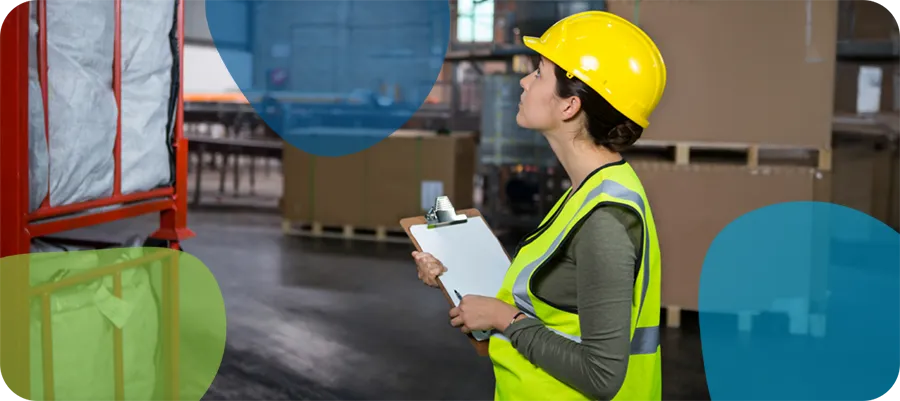
Home Blog The Safety Metrics That Matter How to Track and Improve Workplace Safety By Shilpa Sharma Facebook Twitter LinkedIn Safety in the workplace isn’t just a box to check—it’s a strategy that impacts productivity, morale, and compliance. But how do you know if your safety efforts are truly working? Tracking the right metrics provides the clarity needed to assess your current programs, identify risks, and drive continuous improvement. Metrics are more than numbers—they’re a window into your organization’s strengths and weaknesses. The right data shows what’s working, where gaps exist, and how to make real progress. This guide explores the key safety metrics every organization should track, why they matter, and how they can build a stronger, safer culture. Why Metrics Are Essential for Safety Management It’s easy to assume that safety efforts are effective simply because there hasn’t been a recent incident. But this reactive mindset leaves organizations vulnerable. Metrics allow you to move beyond assumptions and take a proactive approach. Here’s why tracking safety metrics is critical: Identify Trends: Metrics uncover patterns in incidents, near-misses, and compliance gaps, providing actionable insights. Set Priorities: Clear data highlights where to focus your efforts,whether it’s a particular department, process, or hazard. Measure Success: Safety initiatives need measurable goals. Metrics show whether you’re meeting them or need to adjust. Improve Accountability: Transparent data ensures everyone, from frontline workers to executives, understands their role in improving safety. Safety metrics turn vague objectives like “reduce accidents” into specific, trackable actions. They’re the foundation of a safety program that delivers real results. Key Takeaways The best safety programs are built on data, not assumptions. Metrics give leaders the visibility they need to prioritize, improve, and stay proactive. Leading indicators like near-miss reports and safety observations drive real change. They spotlight risk before it becomes an incident. Tracking compliance and training completion keeps your workforce prepared—and your business protected. It’s not just about meeting requirements; it’s about readiness. Technology turns data into decisions. Automation and dashboards streamline tracking, improve accuracy, and help you measure what really matters. The Safety Metrics That Matter Most Tracking safety data can feel overwhelming, especially with so many variables at play. To make the process manageable, focus on these key metrics that provide the most insight into your workplace safety efforts: 1. Incident Rates: The Safety Baseline What It Measures: The number of workplace injuries or illnesses over a specific period, often calculated per 100 full-time employees. Why It Matters: Incident rates are a critical measure of workplacesafety. A high rate signals systemic issues, while a declining rateindicates progress. How to Track: Calculate Total Recordable Incident Rate (TRIR) andcompare it against industry benchmarks. Break the data down further bydepartment or job role to identify problem areas. Example in Action: A manufacturing company notices its TRIR is higher than the industry average. By analyzing incident reports, they discover most injuries occur during equipment maintenance. This insight leads to additional training and updated safety protocols, reducing incidents over time. 2. Near-Miss Reports: Catching Problems Early What It Measures: Situations where an accident was narrowly avoided, such as a worker tripping over an unsecured cable but notfalling. Why It Matters: Near-misses provide critical warnings about potential hazards. They’re opportunities to fix problems before theycause harm. How to Track: Implement an easy-to-use reporting system and actively encourage workers to log near-misses. Track trends to pinpointrecurring risks. Example in Action: A manufacturing company notices its TRIR is higher than the industry average. By analyzing incident reports, they discover most injuries occur during equipment maintenance. This insight leads to additional training and updated safety protocols, reducing incidents over time. 3. Compliance Scores: Staying Ahead of Regulations What It Measures: How well your organization meets regulatory safety standards and internal policies Why It Matters: Falling out of compliance can lead to hefty fines, reputational damage, and operational delays. High compliance scoresindicate your processes are robust and up-to-date. How to Track: Conduct regular audits, inspections, and reviews of safety documentation. Use safety management software to streamlinecompliance tracking. Example in Action: During a routine audit, a logistics company identifies gaps in their chemical storage compliance. By updating training and implementing automated alerts for inspections, they prevent violations and maintain their safety record. 4. Training Participation and Completion: Building a Prepared Workforce What It Measures: The percentage of employees who have completed required safety training, as well as refresher courses. Why It Matters: Training ensures workers have the knowledge and skills to handle risks effectively. Low participation rates can indicategaps in your safety program. How to Track: Monitor training attendance and completion rates using a learning management system (LMS). Analyze data by team ordepartment to identify weak spots. Example in Action: : A healthcare provider notices low completion rates for fire safety training among night-shift staff. They adjust training schedules to accommodate night workers, increasing compliance and preparedness. 5. Safety Observations: Proactive Risk Management What It Measures: Observations conducted by managers or safety teams to evaluate workplace conditions and behaviors. Why It Matters: : Regular safety observations catch potential hazardsand reinforce accountability. They also provide insight into how wellsafety policies are being followed. How to Track: : Use standardized checklists during observations and log findings in a centralized system. Look for recurring issues and trackimprovements over time. Example in Action: : A food processing plant conducts monthly safety observations and notices inconsistent use of PPE in certain areas. They respond by reinforcing training and updating signage, improving compliance. How Tracking Metrics Drives Improvement What It Measures: Observations conducted by managers or safety teams to evaluate workplace conditions and behaviors. Why It Matters: : Regular safety observations catch potential hazards and reinforce accountability. They also provide insight into how wellsafety policies are being followed. How to Track: : Use standardized checklists during observations and log findings in a centralized system. Look for recurring issues and trackimprovements over time. Example in Action: : A food processing plant conducts monthly safety observations and notices inconsistent use of PPE in certain areas. They
The Seven Deadly Sins That Destroy Safety Culture

Home Blog The Seven Deadly Sins That Destroy Safety Culture By Divyanshu Jain Facebook Twitter LinkedIn Even the strongest safety cultures can be dismantled by a few key missteps. These are the seven deadly sins that can erode safety standards, diminish trust, and put lives at risk. Understanding them is the first step in preventing their destructive impact. 1. Double Standards: One Rule for Some, Another for Others One of the fastest ways to destroy a safety culture is to enforce rules inconsistently. If leadership disregards safety policies while expecting employees to follow them, resentment and noncompliance will spread. Occupational Health and Safety Officer Ted Lane recalls, “I’ve seen situations where the sign on the shop door says ‘Safety glasses must be worn,’ but the boss walks in without them. If leadership doesn’t follow the rules, don’t expect anyone else to.” 2. Top-Down Directives Without Worker Input Safety policies that are dictated from the top down—without input from frontline workers—often fail. Employees who aren’t consulted see policies as bureaucratic red tape rather than measures designed to protect them. Sharon Cole, an OHS Consultant, advises, “If you’re writing a safety policy, involve the workers it will affect. They’re the ones on the frontlines, and their input makes policies practical and enforceable.” 3. Tolerating Negative Attitudes Toward Safety A single bad attitude can spread like wildfire. Workers who scoff at safety meetings, dismiss concerns, or ignore protocols undermine the organization’s culture. If their behavior is left unchecked, it signals that safety isn’t truly a priority. Ted Lane emphasizes, “Zero tolerance for bad safety performance is crucial. Whether it’s the boss’s son or your most experienced worker, if they refuse to comply with safety rules, they need to go.” 4. Shifting Priorities: Safety Takes a Back Seat Many companies claim safety is their top priority—until deadlines or costs are at stake. When safety is sacrificed for productivity, employees receive a clear message: safety only matters when it’s convenient. This erodes trust and encourages unsafe behaviors. 5. Failing to Lead by Example When supervisors and executives fail to embody the safety standards they expect from employees, it weakens the entire culture. A strong safety culture starts at the top and trickles down. Patrick Cantner, HSE Director of Willbros Canada, warns, “If you say, ‘Production done in the absence of safety will not be valued or rewarded,’ but then allow it to happen, you’ll destroy your safety culture.” 6. Punishing Workers for Reporting Issues If employees who report unsafe conditions or incidents are reprimanded instead of supported, they will stop coming forward. A culture of fear leads to underreporting, which increases risk. Marcia Minto, an OH&S Program Manager, states, “If someone reports an issue and is yelled at by management, they won’t come forward next time. Employees need to feel empowered, not afraid.” 7. Complacency: The Silent Killer Organizations that have gone a long time without an incident often become overconfident. Safety policies become lax, assumptions replace vigilance, and standards begin to slip. Over time, this complacency spreads, erasing years of hard work in building a safety culture. The moment an organization assumes it has ‘solved’ safety, it has already taken a step backward. Preventing the Seven Deadly Sins To maintain a strong safety culture, organizations must actively identify and counter these pitfalls. Leaders must lead by example, workers must feel empowered to participate, and safety must be a genuine, unwavering priority. The key takeaway? Building a safety culture is difficult, but destroying one is easy. Organizations must remain vigilant to ensure safety is not just a policy, but a deeply ingrained part of workplace operations. BIS Social Media Follow BIS Safety Software for industry-leading safety updates, training solutions, and more. Hover over each icon for quick access to follow, share, or explore our other channels. Facebook Instagram Linkedin Youtube Related Articles All Posts 360 Immersive Alberta safety courses Allan James Moore awareness BambooHR integration biometric sensors BIS Podcast BIS Safety Software black holes Brave Leadership chemical chronic injuries Coming Soon community safety programs Compliance compliance courses compliance tools compliance vs protection Construction advocacy Construction education Construction industry construction safety training crane customized training daily trip inspection Danny Sellers data-driven safety digital forms Dr. Joanna Pagonis driver file management driver training early intervention EHS Einstein emergency preparedness emergency supplies employee health employee safety employee training ergonomics exoskeletons fall protection field safety field safety services fire prevention first aid kit first week on the job fleet management frontline safety gravitational waves hands-on training hazard communication hazard prevention Health & Safety Podcast heavy equipment safety high voltage systems HR automation HR software humor in safety Imposter Syndrome incident data incident reporting industrial safety injury prevention injury reporting injury response internal audits Jennifer Lastra job site hazards job site risks job site safety Jody Young KBR Safety Training Leadership leadership accountability leadership and empathy LIGO LMS lone workers mental health at work MI Safety new workers Northern BC NRCA NSC Standard 13 occupational health occupational safety oil and gas safety onboarding safety Online safety training OSHA compliance OSHA standards overhead crane courses pain awareness physics careers pipeline safety podcast PPE PPE enforcement pre-trip inspection pretrip inspection Professional development psychological safety risk management road safety Robin Postnikoff safety safety advice safety article safety best practices safety communication safety compliance Safety Conversations safety culture safety innovation safety insights safety inspection Safety Leaders safety leadership safety management safety management system safety metrics safety myths safety podcast Safety Spotlight safety systems safety technology safety theater safety tips safety training Sinogap Solutions smart helmets space science supervisor training Total Recordable Injury Formula training training courses training matrix training record management transportation Trust and Accountability vehicle safety Virtual Reality VR Technology wearable technology WHMIS women in leadership work-alone training worker accountability worker protection worker safety workforce management workforce training workplace best practices workplace certification Workplace Culture workplace hazards workplace health workplace injury prevention workplace risk management Workplace safety workplace safety culture workplace wellness WSPS Party Crashing the Safety Status Quo: Allan James Moore
10 Tips for Building a Strong Safety Culture

Home Blog 10 Tips for Building a Strong Safety Culture Keep safety practical and punchy! By Divyanshu Jain Facebook Twitter LinkedIn Creating a strong safety culture takes effort, but the rewards—fewer injuries, lower costs, and a more engaged workforce—are well worth it. Organizations that successfully build a culture of safety don’t just reduce accidents; they improve morale, efficiency, and even profitability. Here are ten essential strategies to strengthen workplace safety: 1. Be Willing to Make Sacrifices Transforming a weak safety culture into a strong one isn’t always easy. It requires hard decisions and, in some cases, a willingness to part ways with employees who refuse to comply. Ted Lane, an Occupational Health and Safety Officer, recalls a major Alberta construction company that implemented a zero-tolerance safety policy. Initially, they lost workers who resisted the new approach, but within a few years, they rebuilt with employees who valued safety. The result? A safer, more efficient, and ultimately more profitable company. 2. Engage Employees in Safety Decisions Many safety policies fail because they are imposed without input from the employees they affect. Workers on the frontlines know the risks better than anyone else, so including them in safety discussions leads to more practical, effective solutions. “We promote the guys to do some of the things in their own way,” says Darryl Chipman, Director for CASCA. “Recently, a worker suggested using pictures instead of a long written form for safety reports. It made things easier, faster, and more effective.” 3. Encourage Candor and Open Communication Employees need to feel safe speaking up about unsafe conditions or behaviors. In organizations with strong safety cultures, workers are encouraged—not punished— for raising concerns. Ted Lane has a unique way of testing this: “I’ll walk into a site missing a piece of safety gear. If a worker stops me and says, ‘Hey, get that fixed,’ I know that company’s culture is working.” 4. Lead by Example Leadership must consistently demonstrate their commitment to safety. When managers follow safety protocols, employees are far more likely to do the same. Patrick Cantner, HSE Director of Willbros Canada, advises, “If you say safety comes first, but then reward employees who cut corners to meet deadlines, your safety culture will collapse.” 5. Promote Transparency An open approach to safety builds trust and accountability. Some companies publicly share their safety records and improvement efforts to reinforce the importance of workplace safety. Kinder Morgan sets a high standard by posting safety reports—including injury rates and incidents—on its public website. This level of transparency keeps employees and leadership accountable. 6. Empower Employees to Act Workers must feel confident in stopping unsafe work without fear of retaliation. When employees know they have the authority to halt operations for safety concerns, they become active participants in maintaining a secure workplace. “Our control center operators don’t need approval to shut down a pipeline if they feel there’s an unsafe condition,” says Dan Carter, Director of the Central Region & Control Centre for Kinder Morgan. “That’s built into our procedures.” 7. Make Safety Personal People are more likely to follow safety procedures if they understand the personal impact. Sharon Cole, OHS Consultant for Alberta Gaming and Liquor Corporation, changed a skeptical worker’s attitude by asking him to imagine how he’d feel if his best friend got hurt on the job because he didn’t speak up. That moment of personal connection turned him into one of the most safety-conscious employees on the site. 8. Keep Safety Communication Frequent Safety isn’t a one-time conversation—it’s an ongoing discussion. Monthly safety updates, toolbox talks, and bulletin boards help reinforce key messages. Adam Czarnecki, Human Resource Manager for Great West Kenworth, recommends using statistics to keep employees engaged: “Send out reports on injury trends. Show workers the progress being made.” 9. Recognize and Reward Safe Behavior Positive reinforcement plays a critical role in fostering safety. However, rewards should focus on long-term commitment rather than quick incentives that might encourage underreporting of incidents. Chipman explains, “We offer training and career advancement to employees who prioritize safety. When new safety positions open, we promote from within.” 10. Start With Yourself Safety culture begins with individuals taking personal responsibility. It’s easy to point fingers at management or coworkers, but real change starts when every employee commits to prioritizing safety in their own work. The Real Bottom Line When safety is embedded in an organization’s culture, it doesn’t just prevent accidents—it improves efficiency, morale, and trust. Strong safety cultures don’t develop overnight, but with commitment, consistency, and leadership, they become an essential part of the workplace. The key takeaway? Safety isn’t just a policy—it’s a mindset, and it starts with you. BIS Social Media Follow BIS Safety Software for industry-leading safety updates, training solutions, and more. Hover over each icon for quick access to follow, share, or explore our other channels. Facebook Instagram Linkedin Youtube Related Articles All Posts 360 Immersive Alberta safety courses Allan James Moore awareness BambooHR integration biometric sensors BIS Podcast BIS Safety Software black holes Brave Leadership chemical chronic injuries Coming Soon community safety programs Compliance compliance courses compliance tools compliance vs protection Construction advocacy Construction education Construction industry construction safety training crane customized training daily trip inspection Danny Sellers data-driven safety digital forms Dr. Joanna Pagonis driver file management driver training early intervention EHS Einstein emergency preparedness emergency supplies employee health employee safety employee training ergonomics exoskeletons fall protection field safety field safety services fire prevention first aid kit first week on the job fleet management frontline safety gravitational waves hands-on training hazard communication hazard prevention Health & Safety Podcast heavy equipment safety high voltage systems HR automation HR software humor in safety Imposter Syndrome incident data incident reporting industrial safety injury prevention injury reporting injury response internal audits Jennifer Lastra job site hazards job site risks job site safety Jody Young KBR Safety Training Leadership leadership accountability leadership and empathy LIGO LMS lone workers mental health at work MI Safety new workers Northern BC NRCA NSC Standard 13 occupational health
Rescue 7 – An Authorized BIS Partner
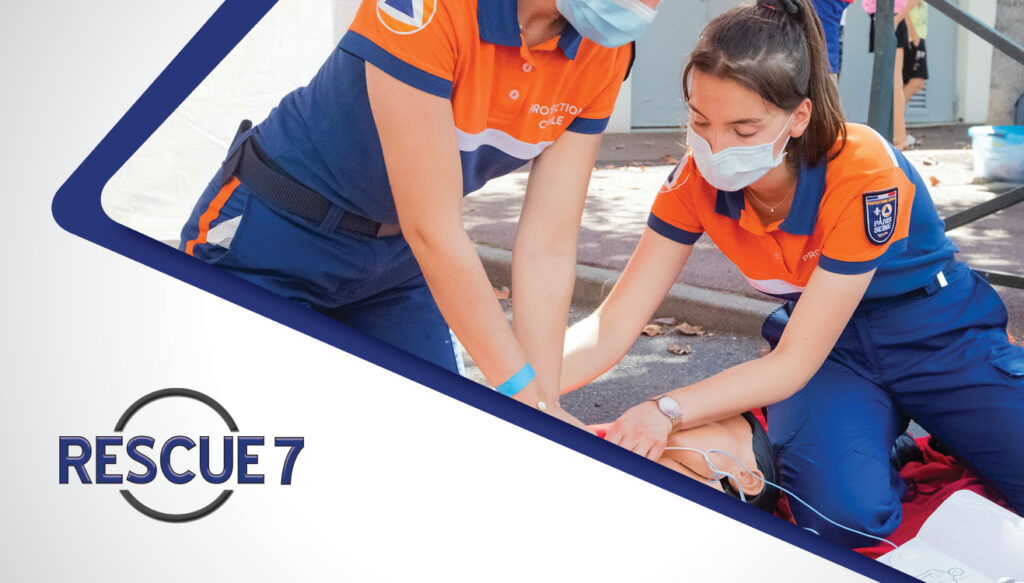
Home Blog Rescue 7 – An Authorized BIS Partner By Luke Hillenbrand Facebook Twitter LinkedIn A Leader in Workplace First Aid For over two decades, Rescue 7 has been at the forefront of workplace first aid training in Canada. Founded in 1998 by Toronto firefighter John Collie, the company has grown from a home-based operation to a nationally recognized training provider, equipping thousands of employees with the skills and confidence to respond in emergency situations. ————————————————————————— “We want to give people the tools and confidence to help in real-life situations. That’s what we’re here for.” Michele McCabe General Manager ————————————————————————— Tailored Training Across Canada Rescue 7 delivers high-quality, industry-specific training using a combination of instructor-led sessions and blended learning models. Their programs are certified nationwide (except in Quebec, which has a separate regulatory framework) and cater to a wide range of industries, from corporate offices to hazardous work environments. Unlike some international training models that allow fully online certification, Canada requires hands-on instruction. Rescue 7’s expert trainers—who are all active or retired first responders—ensure that participants receive real-world, practical experience that prepares them to act in critical situations. As Michele McCabe explains: ————————————————————————— “In the States and other countries, you can do workplace first aid online. But in Canada, you have to actually learn how to do first aid—how to bandage someone, how to do CPR. It’s not just theoretical.” ————————————————————————— Primary List of Services Blended First Aid Training CPR and AED Certification Workplace Emergency Response Planning First Aid Compliance Training Automated External Defibrillator (AED) Solutions Naloxone & Overdose Response Training Rescue 7 combines expert-led instruction with BIS Safety Software’s digital solutions to deliver accessible, industry-leading safety training across Canada. Proud to Partner with Rescue 7 Through their partnership with BIS Safety Software, Rescue 7 enhances workplace first aid training by integrating blended learning solutions with cutting-edge digital tools. The BIS platform enables seamless course management, reporting, and compliance tracking, making it easier for organizations to certify employees in CPR, AED use, and emergency response. This collaboration ensures that businesses across Canada have access to high-quality, accessible, and regulatory-compliant first aid training. Partnership with BIS Safety Software Rescue 7’s partnership with BIS Safety Software began over a decade ago, playing a pivotal role in the adoption of blended first aid training across Canada. The BIS platform has been instrumental in streamlining course management, reporting, and compliance tracking, making it easier for Rescue 7 to manage large-scale training programs. ————————————————————————— “BIS has been with us from the start. Their system is user-friendly, and the customer service has always been fantastic.” Michele McCabe General Manager ————————————————————————— Rescue 7 works with several governing bodies and uses the BIS platform to track training progress, grant access to reports, and ensure full compliance with industry standards. Discover More About Rescue 7 Through its expert training programs, trusted partnerships, and commitment to innovation, Rescue 7 remains a leader in workplace first aid education. Whether you need first aid certification, AED solutions, or emergency preparedness programs, Rescue 7 is dedicated to ensuring safety in every workplace. Visit Rescue 7’s Website BIS Social Media Follow BIS Safety Software for industry-leading safety updates, training solutions, and more. Hover over each icon for quick access to follow, share, or explore our other channels. Facebook Instagram Linkedin Youtube Related Articles All Posts 360 Immersive Alberta safety courses Allan James Moore awareness BambooHR integration biometric sensors BIS Podcast BIS Safety Software black holes Brave Leadership chemical chronic injuries Coming Soon community safety programs Compliance compliance courses compliance tools compliance vs protection Construction advocacy Construction education Construction industry construction safety training crane customized training daily trip inspection Danny Sellers data-driven safety digital forms Dr. Joanna Pagonis driver file management driver training early intervention EHS Einstein emergency preparedness emergency supplies employee health employee safety employee training ergonomics exoskeletons fall protection field safety field safety services fire prevention first aid kit first week on the job fleet management frontline safety gravitational waves hands-on training hazard communication hazard prevention Health & Safety Podcast heavy equipment safety high voltage systems HR automation HR software humor in safety Imposter Syndrome incident data incident reporting industrial safety injury prevention injury reporting injury response internal audits Jennifer Lastra job site hazards job site risks job site safety Jody Young KBR Safety Training Leadership leadership accountability leadership and empathy LIGO LMS lone workers mental health at work MI Safety new workers Northern BC NRCA NSC Standard 13 occupational health occupational safety oil and gas safety onboarding safety Online safety training OSHA compliance OSHA standards overhead crane courses pain awareness physics careers pipeline safety podcast PPE PPE enforcement pre-trip inspection pretrip inspection Professional development psychological safety risk management road safety Robin Postnikoff safety safety advice safety article safety best practices safety communication safety compliance Safety Conversations safety culture safety innovation safety insights safety inspection Safety Leaders safety leadership safety management safety management system safety metrics safety myths safety podcast Safety Spotlight safety systems safety technology safety theater safety tips safety training Sinogap Solutions smart helmets space science supervisor training Total Recordable Injury Formula training training courses training matrix training record management transportation Trust and Accountability vehicle safety Virtual Reality VR Technology wearable technology WHMIS women in leadership work-alone training worker accountability worker protection worker safety workforce management workforce training workplace best practices workplace certification Workplace Culture workplace hazards workplace health workplace injury prevention workplace risk management Workplace safety workplace safety culture workplace wellness WSPS Party Crashing the Safety Status Quo: Allan James Moore on Redefining Safety Leadership April 22, 2025 In this Safety Spotlight episode, Allan James Moore dives into the “Party Crasher” mindset, challenging traditional safety norms with humor,… Read More Jeff Mulligan | Safety Spotlight Podcast April 17, 2025 A powerful new episode of The Safety Spotlight podcast is in the works! Final touches are underway—stay tuned for safety… Read More Jennifer Lastra | Safety Spotlight Podcast April 17, 2025 A powerful new episode of The Safety Spotlight podcast is in the works! Final touches are underway—stay tuned for safety…
NRCA – An Authorized BIS Partner

Home Blog NRCA – An Authorized BIS Partner By Luca Shillabeer Facebook Twitter LinkedIn The Northern Regional Construction Association (NRCA) is an industrial, commercial, and institutional sector association serving 120 members across northern British Columbia. As a key advocate for the construction industry in the region, NRCA provides education, training, and support to ensure that its members can build safer and more efficiently. One of NRCA’s primary pillars is education, which is why the association has prioritized partnerships with organizations like BIS Safety Software. ————————————————————————— “One of our big pillars is education, and partnering with BIS allows us to provide members with safety courses that are accessible when they need them.” Kayla Hearn Manager, Operations and Communications ————————————————————————— Strengthening Safety & Industry Growth Founded in the 1960s, NRCA originally served as a community hub, providing plan rooms where members could review construction documents. Over time, the association’s role evolved significantly to include: Education and Training – Offering a range of construction safety courses to meet industry demands. Community Building – Strengthening professional connections and fostering collaboration among members. Advocacy and Support – Ensuring that northern BC’s construction industry has a voice at the provincial level. As the construction landscape changes, NRCA remains committed to adapting alongside its members, helping them stay ahead of industry requirements and best practices. ————————————————————————— ““One of our original purposes was to act as a community hub, and while we still do that, we’ve evolved to focus on educating the community and keeping them building together.“ Kayla Hearn Manager, Operations and Communications ————————————————————————— NRCA is dedicated to uplifting its members and helping them build better. The association operates with a strong regional focus, uniquely serving the needs of construction professionals across northern British Columbia’s vast landscape. Unlike other construction associations in BC, NRCA covers the largest geographical region while being the smallest in membership size. This distinction allows NRCA to provide highly tailored support to its members, ensuring that they receive the resources and training necessary to navigate the specific challenges of northern construction projects. ————————————————————————— “The North is a really specific community on its own, and navigating the challenges that come with that is what sets us apart from other associations across the province” Kayla Hearn Manager, Operations and Communications ————————————————————————— Primary List Of Services Safety Training & Education Industry Advocacy & Support Community Building & Networking Regional Construction Resources Proud To Partner With The NRCA The partnership between the NRCA and BIS Safety Software underscores a shared dedication to workplace safety, education, and industry advancement. By leveraging NRCA’s deep-rooted commitment to supporting construction professionals in northern British Columbia with BIS’s innovative digital training solutions, they are ensuring that workers across remote and urban job sites have seamless access to critical safety education. Together, NRCA and BIS are empowering members with the tools they need to maintain compliance, enhance job site safety, and build a stronger, more resilient workforce. Partnership With BIS Safety Software The NRCA has partnered with BIS Safety Software to expand its safety training offerings, making courses more accessible to its members, whether they are working in a city or on a remote job site. The NRCA has significantly expanded its use of BIS’s platform over the past year and plans to continue leveraging its features. ————————————————————————— “We love the service, and we want to keep going ahead with it. It’s something our members can access whether they’re in town or working on a job site,”” Kayla Hearn Manager, Operations and Communications ————————————————————————— Accessibility is a key priority for NRCA, and BIS Safety Software provides an efficient, flexible learning solution that allows members to complete their required safety training on their own schedule. Discover More About The NRCA As an Authorized Partner of BIS Safety Software, the NRCA delivers high-quality safety training tailored to construction professionals in northern British Columbia. Through its partnership with BIS, NRCA ensures members have flexible, accessible training solutions to support compliance and job site safety. Discover how NRCA and BIS are working together to empower workers and strengthen safety standards across the industry. Visit The NRCA Website BIS Social Media Follow BIS Safety Software for industry-leading safety updates, training solutions, and more. Hover over each icon for quick access to follow, share, or explore our other channels. Facebook Instagram Linkedin Youtube Related Articles All Posts 360 Immersive 360immersive Alberta safety courses Allan James Moore awareness BambooHR integration biometric sensors BIS Podcast BIS Safety Software black holes Brave Leadership chemical chronic injuries Coming Soon community safety programs Compliance compliance courses compliance tools compliance vs protection Construction advocacy Construction education Construction industry construction safety training crane customized training daily trip inspection Danny Sellers data-driven safety digital forms Dr. Joanna Pagonis driver file management driver training early intervention EHS Einstein emergency preparedness emergency supplies emotional training employee health employee safety employee training ergonomics exoskeletons fall protection field safety field safety services fire prevention first aid kit first week on the job fleet management frontline safety gravitational waves hands-on training hazard communication hazard prevention Health & Safety Podcast heavy equipment safety high voltage systems HR automation HR software human-centered safety humor in safety immersive learning Imposter Syndrome incident data incident reporting industrial safety injury prevention injury reporting injury response internal audits Jennifer Lastra job site hazards job site risks job site safety Jody Young KBR Safety Training Leadership leadership accountability leadership and empathy LIGO LMS lone workers mental health at work MI Safety new workers Northern BC NRCA NSC Standard 13 occupational health occupational safety oil and gas safety onboarding safety Online safety training OSHA compliance OSHA standards overhead crane courses pain awareness physics careers pipeline safety podcast PPE PPE enforcement pre-trip inspection pretrip inspection Professional development psychological safety risk management road safety Robin Postnikoff safety safety advice safety article safety best practices safety communication safety compliance Safety Conversations safety culture safety innovation safety insights safety inspection Safety Leaders safety leadership safety management safety management system safety metrics safety myths safety podcast Safety Spotlight safety systems safety technology safety theater safety
Safety Buzz Campus – An Authorized BIS Partner

Home Blog Safety Buzz Campus – An Authorized BIS Partner By Luca Shillabeer Facebook Twitter LinkedIn Safety Buzz Campus, based in Dunmore, Alberta, just outside Medicine Hat, has been a cornerstone of safety education and training for over 20 years. Initially focused on delivering core safety courses, the organization has grown into a multifaceted safety training campus with four distinct departments: Safety Training – Offering in-person, online, and off-site safety courses for various industries. Driver Training School – Providing Class 1 and Class 3 driver training programs as part of their comprehensive campus offerings. Safety Management Services – Developing and maintaining customized safety programs for companies to ensure compliance and foster a safety-first culture. Field Safety Services – Supporting off-site safety needs, including confined space monitoring, safety supervision, and equipment such as air trailers and supplied air systems. This comprehensive approach ensures Safety Buzz Campus meets the diverse safety needs of its clients, whether through education, compliance, or on-the-ground support. Tailored Training Solutions The heart of Safety Buzz Campus lies in safety training. From its inception, the organization has been dedicated to building safety cultures within businesses and communities. Their approach goes beyond merely teaching safety practices—they aim to instill an understanding of the purpose and value behind these practices. This commitment helps clients integrate safety into their workplace culture and personal lives. ————————————————————————— “Bringing a safety culture to companies has always been incredibly important. We don’t just like to teach safety practices, we also like to help people understand the value and purpose of it.” Pamela Kunz Safety Buzz Campus Primary List of Services In-house Fall Protection Training Equipment-Specific Courses Safety Training Driver Training School Safety Management Services Field Safety Services Proud to Partner with Safety Buzz Campus The partnership between Safety Buzz Campus and BIS Safety Software showcases a shared commitment to advancing safety education across multiple industries. By combining Safety Buzz Campus’s extensive expertise in hands-on training with BIS Safety Software’s innovative digital solutions, they enhance accessibility and efficiency in safety programs. This collaboration streamlines training management, supports compliance, and empowers businesses to cultivate strong safety cultures within their organizations and communities. Partnership with BIS Safety Software Related read: Do you own a business in the insurance industry? Check out how Artificial Intelligence is transforming the insurance industry. Safety Buzz Campus has been leveraging BIS Safety Software for the past five years to streamline their operations. The scheduler feature is a vital tool they use daily to manage training sessions and resources efficiently. ————————————————————————— “We’ve been using BIS for about 5 years now and, clearly it’s designed for the industry. It’s designed exactly the way we need it… The scheduler is the center of our planning and organization.” Pamela Kunz Safety Buzz Campus ————————————————————————— They’re also exploring additional BIS features, such as document creation and CRM capabilities, to maximize the platform’s potential and integrate their diverse services. Looking ahead, they aim to expand their partnership with BIS by digitizing their in-house courses, creating video-based online programs, and enhancing their e-learning offerings. Discover Safety Buzz Campus As an Authorized Partner of BIS Safety Software, Safety Buzz Campus provides comprehensive safety training and consulting services across various industries. From hands-on equipment training to customized safety management solutions, Safety Buzz Campus is committed to fostering safer workplaces through education and innovation. Discover how they help businesses and communities build strong safety cultures and ensure compliance with industry standards. Visit Safety Buzz Campus’ Website BIS Social Media Follow BIS Safety Software for industry-leading safety updates, training solutions, and more. Hover over each icon for quick access to follow, share, or explore our other channels. Facebook Instagram Linkedin Youtube Related Articles All Posts 360 Immersive 360immersive Alberta safety courses Allan James Moore awareness BambooHR integration biometric sensors BIS Podcast BIS Safety Software black holes Brave Leadership chemical chronic injuries Coming Soon community safety programs Compliance compliance courses compliance tools compliance vs protection Construction advocacy Construction education Construction industry construction safety training crane customized training daily trip inspection Danny Sellers data-driven safety digital forms Dr. Joanna Pagonis driver file management driver training early intervention EHS Einstein emergency preparedness emergency supplies emotional training employee health employee safety employee training ergonomics exoskeletons fall protection field safety field safety services fire prevention first aid kit first week on the job fleet management frontline safety gravitational waves hands-on training hazard communication hazard prevention Health & Safety Podcast heavy equipment safety high voltage systems HR automation HR software human-centered safety humor in safety immersive learning Imposter Syndrome incident data incident reporting industrial safety injury prevention injury reporting injury response internal audits Jennifer Lastra job site hazards job site risks job site safety Jody Young KBR Safety Training Leadership leadership accountability leadership and empathy LIGO LMS lone workers mental health at work MI Safety new workers Northern BC NRCA NSC Standard 13 occupational health occupational safety oil and gas safety onboarding safety Online safety training OSHA compliance OSHA standards overhead crane courses pain awareness physics careers pipeline safety podcast PPE PPE enforcement pre-trip inspection pretrip inspection Professional development psychological safety risk management road safety Robin Postnikoff safety safety advice safety article safety best practices safety communication safety compliance Safety Conversations safety culture safety innovation safety insights safety inspection Safety Leaders safety leadership safety management safety management system safety metrics safety myths safety podcast Safety Spotlight safety systems safety technology safety theater safety tips safety training Sinogap Solutions smart helmets space science supervisor training Total Recordable Injury Formula training training courses training matrix training record management transportation Trust and Accountability vehicle safety Virtual Reality VR safety training VR Technology wearable technology WHMIS women in leadership work-alone training worker accountability worker protection worker safety workforce management workforce training workplace best practices workplace certification Workplace Culture workplace hazards workplace health workplace injury prevention workplace risk management Workplace safety workplace safety culture workplace wellness WSPS Leading from the Ground Up: Jeff Mulligan on Building Safety Culture in Construction April 23, 2025 A powerful new episode with Jeff Mulligan of Astec Safety is coming
What’s New in WHMIS 2025
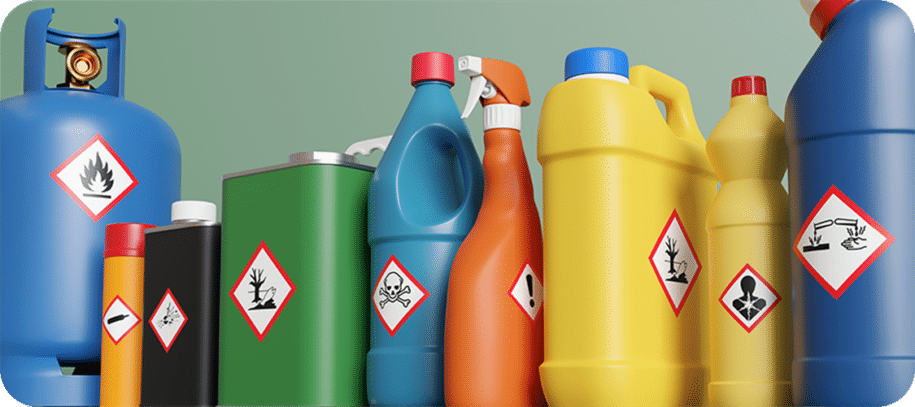
Home Blog What’s New in WHMIS 2025 Key Updates and How to Prepare for a Safer Year By Luke Hillenbrand Facebook Twitter LinkedIn 2025 HPR Amendments Coming into Force WHIMIS 2025 looks a little different – what are the changes? You can read the full list, but the gist of it is the amendments keep our system aligned with the GHS and clarified points of confusion. Let’s take a closer look at some specifics: WHMIS is called WHMIS again. You don’t need to worry about the headache of having to use WHMIS 2015 in any year that isn’t 2015 for much longer. The new amendments are dropping the 2015—it’s cleaner. Going forward, you’ll hear these former versions of WHMIS referred to at the former HPR and the latest updates as the amended HPR. The name is expected to stay the same even when new amendments roll out. Changes to hazard classes and categories. The class Chemicals Under Pressure has been added to the HPA, and Flammable Aerosols is just called Aerosols (with an added category for non-flammable products). The class Pyrophoric Gases has been repealed and integrated as subcategories under Flammable Gases. Updated requirements for when suppliers become aware of significant new data. This update outlines stricter requirements for what a supplier must do when they become aware of significant new data (or information that changes the understanding of the risks) related to their products. While in the transition grace period to their new SDS/labels, suppliers are now required to prepare written documentation that outlines specific changes to the SDS or label as soon as they’re aware of the new information. Other general updates to classification and documentation. Several amendments have been made to update sections for clarity and accuracy in hazard communication. Again, you can find the full list of amendments here, as provided by Health Canada. But what does this mean? Depending on the work you do, some of these amendments will be more relevant to you than others. However, all workers, employers, and suppliers must be educated on these changes when working with hazardous products. For Employers As an employer, you have several responsibilities related to WHMIS. You must educate and train workers on how to work safely with hazardous materials and provide them with the tools and equipment to do so. The requirements for WHMIS training are set by each province or territory, so it’s important to check what’s required where you live. This could look like providing general education during on-boarding, showing workers the sites of chemical spill clean-up kits and eye wash stations, and demonstrating how to store products safely, among other things. You should also consult with your workplace’s health and safety committee or representative. It’s vital to make sure you’re doing everything to comply with the HPR and HPA. The penalties for non-compliance with WHMIS legislation are severe: Frist offences may result in a fine of up to $250,000 and/or 6 months in prison For second offences, the penalties may be a fine of up to $500,000 and/or 18 months in prison Indictable offences may come with even more severe consequences, including up to $5,000,000 in fines and/or 2 years in prison Enough to make you sweat? WHMIS shouldn’t be scary—really, it’s about clear and consistent communication. If there are lapses in hazard communication, it’s up to you to address the cause of the breakdown. For Workers For workers, it’s up to you to attend WHMIS training and follow the instructions you’ve received, which include wearing your PPE as required. Even after the amended HPR come into force, it’s important to remember WHMIS is ongoing. Taking a course once isn’t enough. Along with general education, you must receive job-specific training related to the products you work with, and training must also happen whenever there are changes to the materials or new conditions in a workplace. Refresher training should also happen on a regular basis to fight the forgetting curve. As you can see, it’s important to be educated on the WHMIS amendments, whether you’ve used WHMIS for years or you’re taking it for the first time. In either case, if you find yourself needing a refresher, consider the WHMIS 2025 course from BIS. Overall, the transition to the latest WHMIS updates won’t be as dramatic as the changes were in 2015. This time, most fundamental aspects, like the pictograms, labelling requirements, and information on the SDSs remain the same. However, some products may be reclassified or moved to a new category, and it’s your responsibility to make sure products have the correct labels and SDSs. With just under a year until the deadline to move to the amended HPR, it’s a good time to begin looking at the current WHMIS program in your workplace, no matter your role. How comfortable are you with your WHMIS knowledge? What other changes could help make WHMIS more effective in your workplace? Answering these questions can help you identify the next steps to take. Conclusion If you’re wondering how you can learn more, check out our new WHMIS course! This course reflects the amended HPR. Throughout the course there are self-assessment questions, review activities, and a final exam. Upon passing the final exam, users earn a certificate of completion. BIS Social Media Follow BIS Safety Software for industry-leading safety updates, training solutions, and more. Hover over each icon for quick access to follow, share, or explore our other channels. Facebook Instagram Linkedin Youtube Related Articles BIS Partners Blog Coming Soon Podcast Spotlight Article Leading from the Ground Up: Jeff Mulligan on Building Safety Culture in Construction April 23, 2025/ A powerful new episode with Jeff Mulligan of Astec Safety is coming soon! Hear how he tackles real-world challenges keeping… Read More Party Crashing the Safety Status Quo: Allan James Moore on Redefining Safety Leadership April 22, 2025/ In this Safety Spotlight episode, Allan James Moore dives into the “Party Crasher” mindset, challenging traditional safety norms with humor,… Read More Rewriting the Rules of Safety Training:


